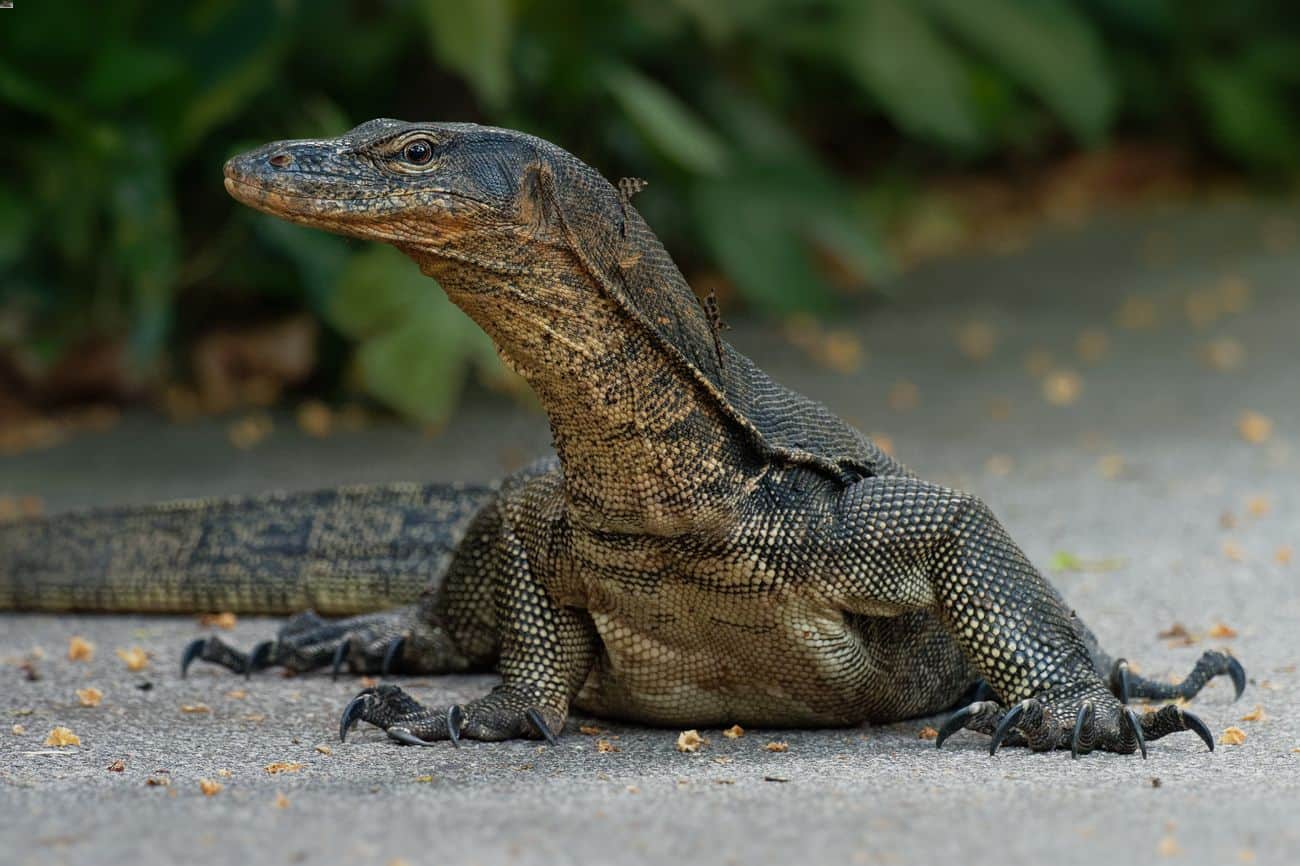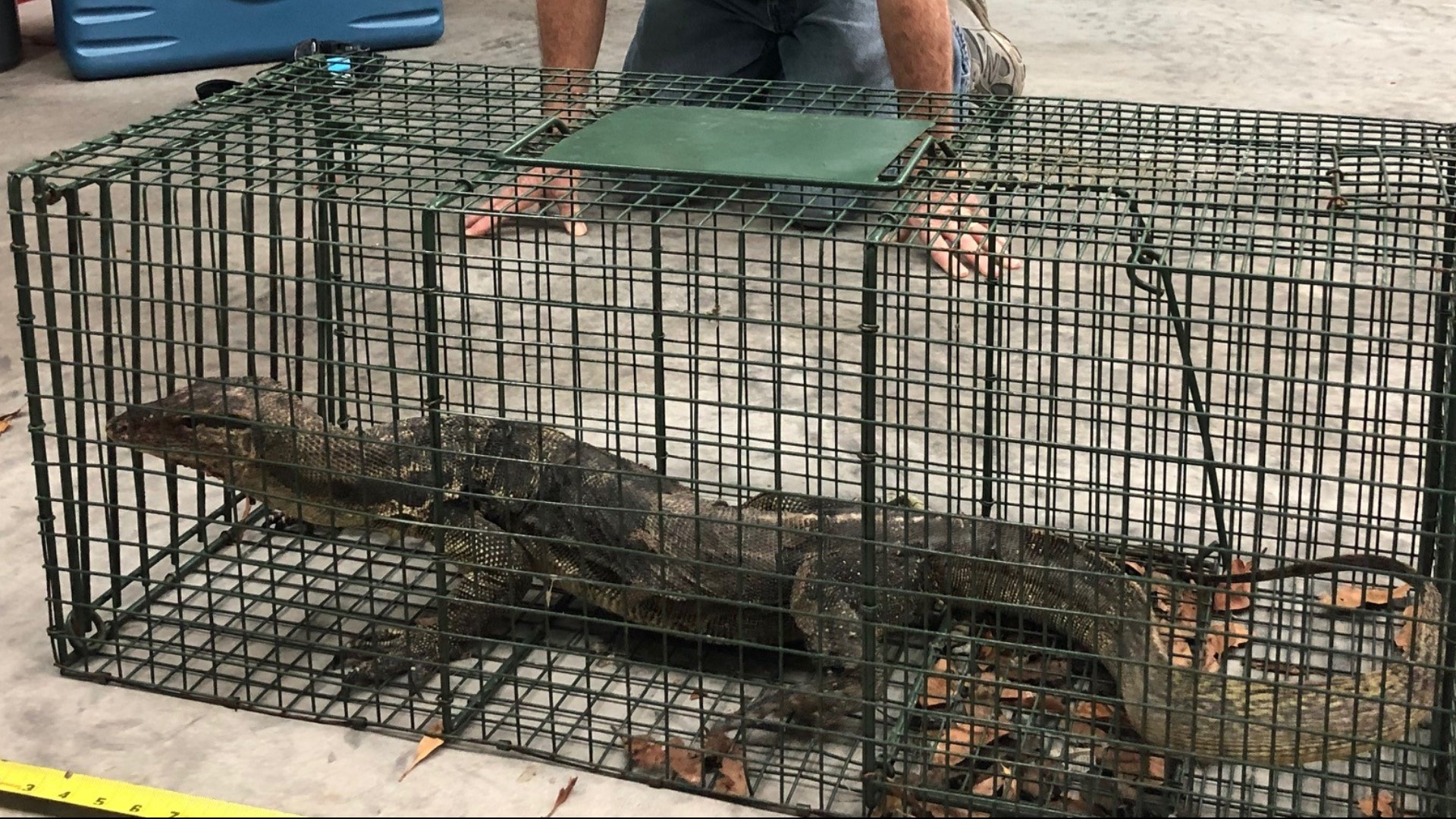Asian Water Monitor Overview

Asian water monitor florida – Asian water monitors are a species of large, semi-aquatic lizards native to Southeast Asia. They are characterized by their long, slender bodies, powerful tails, and distinctive coloration. Asian water monitors are apex predators, feeding primarily on fish, amphibians, and small mammals.
In the depths of Florida’s wetlands, the Asian water monitor, an apex predator, lurks. Its keen eyesight and powerful tail make it a formidable force. Like the captivating charm of the new Wheel of Fortune host , the water monitor commands attention with its vibrant presence.
Yet, beneath its sleek exterior lies a relentless instinct that ensures its dominance in the watery realm.
Physical Characteristics
Asian water monitors can grow to be over 6 feet in length, with males typically larger than females. Their bodies are covered in thick, keeled scales that provide protection from predators and the elements. Their tails are long and muscular, used for swimming and defense. Asian water monitors have long, forked tongues that they use to detect prey and navigate their environment.
The Asian water monitor is a large lizard native to Southeast Asia. It is a member of the family Varanidae, which also includes the Komodo dragon. The Asian water monitor is a semi-aquatic species, and is found in a variety of habitats, including rivers, lakes, and swamps.
It is a carnivorous species, and its diet consists mainly of fish, frogs, and small mammals. The Asian water monitor is a popular pet in some parts of the world, and is also used in traditional medicine. Like Hailey Bieber’s engagement ring , the Asian water monitor is a symbol of beauty and power.
Behavior
Asian water monitors are solitary animals that are most active during the day. They are excellent swimmers and climbers, and they spend much of their time in or near water. Asian water monitors are ambush predators, waiting for prey to come within range before striking. They are also opportunistic scavengers, and they will eat anything they can catch.
Habitat and Distribution
Asian water monitors are found in a variety of habitats, including swamps, marshes, rivers, and lakes. They are native to Southeast Asia, and they have been introduced to other parts of the world, including the United States. Asian water monitors are a threat to native wildlife in some areas, and they are considered an invasive species in some countries.
Conservation Status
Asian water monitors are listed as a vulnerable species by the International Union for Conservation of Nature (IUCN). They are threatened by habitat loss, hunting, and the illegal pet trade. Conservation efforts are underway to protect Asian water monitors and their habitat.
Asian Water Monitors in Florida

The Asian water monitor (Varanus salvator) is a large, semi-aquatic lizard native to Southeast Asia. It was introduced to Florida in the 1990s and has since become established in the state. Asian water monitors are a threat to native wildlife and ecosystems and are considered an invasive species.
Introduction and Establishment
Asian water monitors were first introduced to Florida in the 1990s as pets. Some of these pets were released into the wild, either intentionally or accidentally, and they have since established populations in several areas of the state. The largest population is found in the Everglades, but Asian water monitors have also been found in other parts of Florida, including the Tampa Bay area, the Gulf Coast, and the Panhandle.
Ecological Impact
Asian water monitors are a threat to native wildlife and ecosystems. They are opportunistic predators that eat a variety of animals, including birds, reptiles, mammals, and fish. They have also been known to eat the eggs of native species. Asian water monitors can also compete with native predators for food and resources.
The introduction of Asian water monitors to Florida has had a negative impact on native wildlife and ecosystems. They have contributed to the decline of several native species, including the American crocodile, the Florida panther, and the Everglades snail kite.
Management and Control
There are a number of management and control measures being implemented to address the presence of Asian water monitors in Florida. These measures include:
- Trapping and removal: Asian water monitors are being trapped and removed from areas where they are a threat to native wildlife and ecosystems.
- Public education: The public is being educated about the dangers of Asian water monitors and how to report sightings of these animals.
- Habitat modification: The habitat of Asian water monitors is being modified to make it less suitable for these animals.
The management and control of Asian water monitors in Florida is a complex and ongoing process. There is no single solution to this problem, and a variety of approaches are being used to address the issue.
Public Safety and Awareness: Asian Water Monitor Florida
Asian water monitors pose potential risks to humans and require responsible interactions. Understanding their behavior and implementing safety measures are crucial for peaceful coexistence.
Encounters with Asian water monitors can be unpredictable, and individuals should exercise caution. These lizards are capable of delivering painful bites and may defend themselves if threatened. Maintaining a safe distance and avoiding aggressive behavior is essential.
Guidelines for Safe Interactions, Asian water monitor florida
- Maintain a distance of at least 6 feet from Asian water monitors.
- Do not attempt to approach, handle, or feed these lizards.
- If an encounter occurs, remain calm and slowly back away.
- Do not provoke or threaten the lizard, as this may trigger a defensive response.
- If a water monitor approaches aggressively, create a barrier between yourself and the lizard using a backpack or other object.
- Report any aggressive or threatening behavior to local wildlife authorities.
Educational and Outreach Efforts
Raising awareness about Asian water monitors is vital for promoting responsible interactions and mitigating potential conflicts. Educational campaigns and outreach programs play a significant role in informing the public about the species, its behavior, and the importance of respecting its presence.
Outreach initiatives focus on disseminating information through schools, community events, and online platforms. These efforts aim to educate residents about the ecological significance of Asian water monitors, their role in the ecosystem, and the need for responsible coexistence.
The Asian water monitor, a formidable reptile, roams the swamplands of Florida. Its imposing presence echoes the drama surrounding the recent Florida Georgia Line break up , a musical duo that captivated country music fans. Just as the Asian water monitor’s territorial instincts drive its dominance, so too did the pursuit of individual paths lead to the separation of this iconic duo.
Yet, the legacy of both the reptile and the band remains etched in the annals of their respective realms, a testament to the resilience and adaptability of nature and art.
The Asian water monitor, a formidable predator in Florida’s wetlands, is a sight to behold. Its massive size and aggressive nature make it a topic of both fascination and concern. As we delve into the complexities of this enigmatic creature, let us take a brief detour to witness the gripping clash between Clemson and Coastal Carolina here.
Their intense rivalry on the football field mirrors the fierce competition among apex predators like the Asian water monitor, where survival is a constant battle.
In the realm of animal behavior, the Asian water monitor is a fascinating creature. Its remarkable adaptability extends beyond its aquatic prowess, as evidenced by its ability to traverse roads, even in the face of human traffic. This raises a curious parallel to the topic of driving with suspended license.
Both situations involve navigating a complex system with potential consequences. Like the water monitor, individuals who choose to drive with suspended licenses risk encountering obstacles that could have severe repercussions, not just for themselves but for others as well.